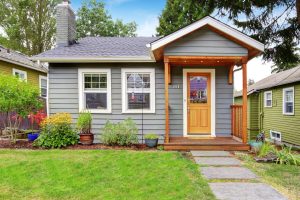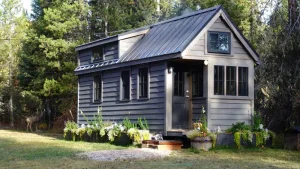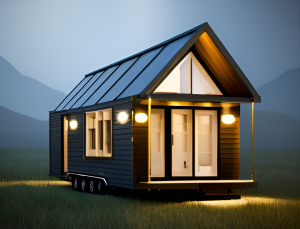Tiny houses are becoming increasingly popular in the United States because they offer a simpler, greener lifestyle that appeals to people of all backgrounds. However, before you start building tiny houses, you should thoroughly understand the zoning restrictions that apply to these tiny buildings. Zoning restrictions for tiny homes can be tricky to navigate, but having the right information can help ensure the process goes smoothly so you can legally enjoy your compact dream home.
Gain Knowledge about Zoning Plans:
Because zoning restrictions vary from city to city, some aspects of tiny houses that are legal in one area may not be legal in another. Before you start making plans or building your tiny home, it’s worth doing your research and familiarizing yourself with the specific restrictions that apply to your chosen location.
Different Types of Tiny Houses:
There are many different types of tiny houses, such as houses on wheels (THOW) and houses built on foundations. The classification of your tiny home can affect the zoning restrictions that apply to it. In some areas, THOWs may be allowed as additional residential units behind a house, while in others they are only allowed in areas designated as RV sites.
Classifying as Permanent Residences:
If you want to legally live in a tiny house as your primary residence and have your application approved by Google Adsense, in most cases you will need to make sure that the building complies with the building regulations that apply to permanent residences. This may include meeting standards for things like insulation, plumbing, electrical, and other services.
Manage Minimum Square Footage Requirements:
Acquiring land in places where there are no minimum size requirements for housing can be difficult for people interested in tiny houses. Do some research to see if there is such a standard in the location you’re interested in, and if there are any exceptions or alternate routes for tiny houses.
Accessory Dwelling Units (ADUs):
Tiny houses have the potential to be legally built as additional housing units to existing homes in many different locations. People who want to live minimalistic but have to abide by the zoning laws in their area may find this an excellent choice. ADUs provide a great opportunity for homeowners to earn extra income by renting out their space or providing suitable living space for their own family members.
Find a Way Out of the Loopholes:
Small dwellings may or may not be specifically addressed in zoning plans in certain areas, which may leave room for interpretation. Consulting local authorities or a legal expert can help you better understand gray areas and any loopholes that could work to your advantage.
Join the Tiny House Community:
Joining communities of people who live in tiny homes, either in person or online, can be a very helpful step when negotiating zoning. Little house enthusiasts who are more experienced than you can offer their knowledge, advise and help avoid typical legal pitfalls.
Conclusion:
As the tiny housing movement continues to expand rapidly, a thorough understanding of zoning restrictions becomes increasingly important. Doing in-depth research and getting professional advice is an absolutely necessary step if you don’t want your desire to live in a tiny house to turn into a legal nightmare. You can begin the path to owning a tiny house with confidence and composure by first understanding the subtleties of zoning restrictions, then discerning the different forms of tiny houses, and finally looking for loopholes. Remember that every place is different, so it’s important to take the time to research local laws, which will dictate how you start small.
FAQs:
1. What are the tiny house zoning rules?
Tiny Home Zoning Ordinances are rules and guidelines created by local municipalities that govern where and how tiny houses can be legally located and occupied. These rules vary by region and generally determine whether you can legally live in a tiny house.
2. Can I park my tiny house anywhere?
No, you cannot park your tiny house anywhere. The zoning plan states where you can park and live in tiny houses, on wheels or on a foundation. Some districts allow the construction of small homes in designated areas, while others allow them as additional housing units on existing properties.
3. What is the difference between a tiny house on wheels (THOW) and a tiny house on foundations?
A tiny house on wheels (THOW) is built on a trailer and is considered a recreational vehicle in some areas. They offer mobility and flexibility, but may have stricter rules regarding parking and occupancy. Tiny houses on foundations are more like traditional homes and may need to meet additional building codes.
4. How do I find out about the zoning plans in my area?
Researching your municipality’s zoning plans is essential. You can usually find this information on the official city or county website. It is recommended that you contact your local zoning or planning department directly for accurate and up-to-date information.
5. Can I legally live in the tiny house full time?
It depends on your local zoning regulations. Some areas allow tiny houses as a primary residence, while others may restrict their use as a second home, vacation home, or temporary home. Make sure you understand the specific regulations for your chosen location.
6. Is there a minimum size requirement for a tiny house?
Yes, certain areas have minimum square footage for housing. Tiny houses may need to meet these requirements to be considered legal habitation. However, due to the uniqueness of tiny houses, some places have exemptions or alternative routes for tiny houses.
7. What is an Accessory Dwelling Unit (ADU)?
An annexe (ADU) is a second residential unit located on the same property as the main residence. Some counties allow tiny houses to be classified as ADUs, providing the opportunity to legally live in a tiny house while complying with zoning regulations.



